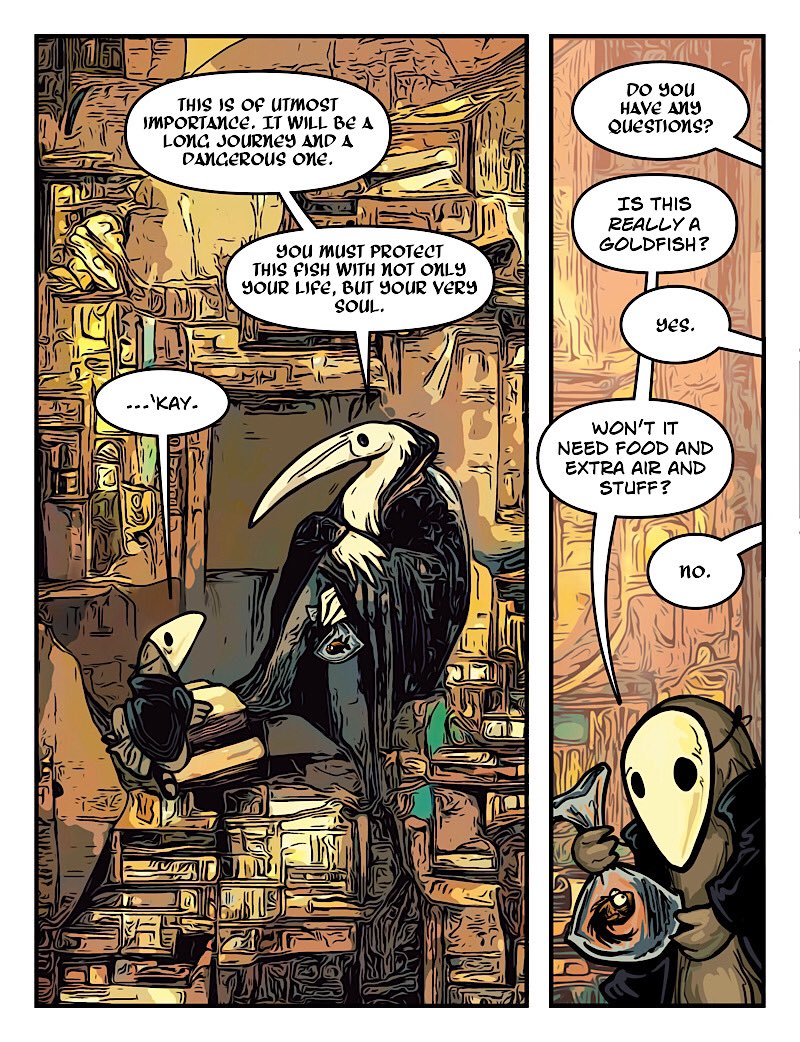So this weekend, armed with a couple of AI art programs, I started noodling around to see what I could do, and if I could put together one of my Weird Little Comic ideas using mostly retouched computer generated imagery.
These nine pages were the result.
These nine pages were the result.

Using one program to render line work on the output from other programs leaves some fairly obvious no-human-involved artifact in places, even retouched. (I drew the figures, obviously.) 

It works better in some places than others. Since most of the AI art programs output very small, I was splicing and dicing a lot to get enough to fit—this is 8.5 x 11, 300 dpi. 

When you run a “smart” inker over things—this was Clip2Comic, the best one I’ve found—it tends to barf everything out at the same lineweight and flatten the foreground/background. I pushed it back a little with an airbrush layer set to “screen”—you can see it behind Thoth. 

To do this one, I started with the Wombo app, took it to Prisma to tweak the colors, took that to Procreate, drew the character and books and retouched all the janky bits, then to Clip2Comic to do linework, then back to Procreate to retouch. And did word balloons in ComicDraw. 

And finally, the...not actually an ending, exactly, but that’s where I paused, anyway, because it was mostly a technical experiment, dammit. 

Anyway, In Conclusion—does it work visually? I think the answer is “sort of.” I’m very aware of the weirdnesses as an artist, obviously. As a dream sequence, the messed up architecture kinda works, but how long can you get away with it?
Sooner or later the reader is probably gonna notice that nothing takes place in the same scene from a different angle.
I think if I wanted to really get my teeth into a project like this, I’d probably have better luck with a program that relies heavily on altering existing photos. That way you could take two or three photos of a space from different angles and let the machine loose.
I’ve fooled with stuff like that in the past, and enjoyed it, but the trade-off is the lack of batshit surrealism. Artbreeder can alllllmost do it with child images, but development has focused on portraits, not scenery.
That said, it has real benefits too. As much as I grumble about retouching, though, I did this in a weekend. I’d be lucky to do two whole pages if I was drawing it all by hand.
That’s the current extent of my thoughts on the matter. Artists and comics peeps, anybody who’s played with this stuff, feel free to weigh in!
• • •
Missing some Tweet in this thread? You can try to
force a refresh







